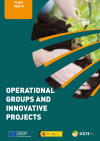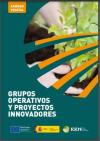Media library
Documentary, graphic and/or audiovisual knowledge objects are offered here, offering information on various sectors and topics. Use the keyword search or search filters to access current audiovisual and documentary knowledge objects useful for your implementation.
If you have any questions or suggestions, please contact us here.
Active ingredients allowed in integrated production for pome fruit trees and restrictions on use
Information on active ingredients in integrated production for pome fruit trees and restrictions on use
Active ingredients allowed in integrated production for stone fruit trees and restrictions on use
Information on active ingredients in integrated production for stone fruit trees and restrictions on use
Rosaceae fire blight
Fire blight is a disease caused by the bacterium Erwinia amylovora that affects various species of the Rosaceae family, including pear, apple, quince, Japanese medlar, etc.
Drosophila suzukii treatment notice for cherry trees
In the various areas where Drosophila suzukii is being monitored, populations of this insect are being detected. Remember that attacks tend to be more intense and frequent at the beginning of the harvest, and treatment will be especially necessary in plots that were attacked in previous years and that left cherries unharvested last year (fly damage or cracking, lack of profitability, etc.).
Notice of treatment of plum moth (Cydia funebrana) in plum trees
The second generation of the plum moth has been seen flying between late May and early June in the Ribera and Val d'Albaida regions, and somewhat later in inland areas. Eggs will hatch this week and next. Treat accordingly.
Scirtothrips aurantii, information note and management recommendations, damage caused by thrips in citrus, persimmon and pomegranate.
Given the damage caused by thrips observed since May on leaves and fruit in various citrus, persimmon and pomegranate crops and the confirmation of the presence of Scirtothrips aurantii Faure in certain areas, the following recommendations have been considered appropriate:
Plant health, pest reports: Erwinia amylovora (fire blight)
Fire blight is a disease caused by the bacterium Erwinia amylovora that affects various species of the Rosaceae family, including pear, apple, quince, and Japanese medlar trees. It was detected in Cantabria in 2011 and is considered an extremely harmful disease.
Monitoring Scirtothrips aurantii on citrus, pomegranate and persimmon.
Scirtothrips aurantii is a pest that affects various crops such as pomegranates, persimmons, citrus fruits, and table grapes. This pest was first detected in Spain in 2020, in the province of Huelva.
Thaumatotibia leucotreta (Meyrik) Contingency Plan
This document sets out the measures to be adopted against Thaumatotibia leucotreta (codling moth), a pest regulated by the EU as a priority quarantine pest under Implementing Regulation (EU) 2019/2072 and Delegated Regulation (EU) 2019/170.
Aromia bungii (Faldermann) Contingency Plan
This document sets out the measures to be taken against Aromia bungii (Faldermann's beetle), a priority pest of the European Union (EU) according to Regulation (EU) 2016/2031 and Delegated Regulation (EU) 2019/1702, with the aim of preventing its appearance, and if it does appear, acting quickly and effectively, determining its distribution and combating it in order to prevent its spread a
Conotrachelus nenuphar (Herbts) Contingency Plan
This document sets out the measures to be taken against the cucurlionid Conotrachelus nenuphar (Herbts), a priority pest (according to Delegated Regulation (EU) 2019/1702) regulated in the European Union (EU) by Regulation (EU) 2016/2031 and Delegated Regulation (EU) 2019/1702, with the aim of preventing its appearance, and in case it appears, acting quickly and effectively, determining its dis
Contingency Plan for Anoplophora chinensis (Forster) and Anoplophora glabripennis (Motschulsky)
This document sets out the measures to be taken against two species of the genus Anoplophora, organisms regulated in the EU, with the aim of preventing their emergence and, if they do appear, acting quickly and effectively, determining their distribution and combating them with the aim of eradicating them.
Recommended chemical control strategy for pomegranate plots with Scirtothrips problems
Risk period from red tip to fruit measuring 3-5 cm Ø: The presence of Scirtothrips will be assessed weekly using the following methods: 1. Capture in yellow chromatic traps as an indication of early presence. These traps require inspection by specialized technical personnel. 2.
National Contingency Plan for Eotetranychus lewisi
This document sets out the measures to be taken against Eotetranychus lewisi, a regulated harmful organism, with the aim of preventing its emergence and, if it does, acting quickly and effectively, determining its distribution and implementing eradication measures. Eotetranychus lewisi is a mite of the Tetranychidae family.

Plant Health. Operational Groups And Innovative Project
English translation of a compilation of projects developed through regional and national Rural Development Programmes, operational groups and innovative projects that are working on agricultural plant health issues.

Plant Health. Operational Groups and Innovative Projects
This publication is a compilation of Operational Groups and Innovative Projects in the field of plant health in Spain and Europe.
Dossier of supra-autonomous innovation projects
Inventory of innovative projects implemented by supra-regional operational groups of the European Innovation Partnership for agricultural productivity and sustainability of the National Rural Development Programme (PNDR) 2014-2022, submeasure 16.2.
Grups operatius a Catalunya. Call 2018 (Catalan)
The Technical Dossier no. 123: “Grups operatius a Catalunya. Call 2018” is dedicated to the Groups Operatius developed within the framework of the CAP Strategic Plan (PEPAC 2023-2027), and includes the Agricultural Knowledge and Innovation Systems, also linked to AKIS (Agricultural Knowledge and Innovation System).
Operational Groups in Catalonia. Call for 2018
"Technical Dossier No. 123: “Operational groups in Catalonia. Call 2018” is dedicated to the Operational Groups developed within the framework of the CAP Strategic Plan (PEPAC 2023-2027), and taking into account the Agricultural Knowledge and Innovation Systems, also known as AKIS (Agricultural Knowledge and Innovation System).




